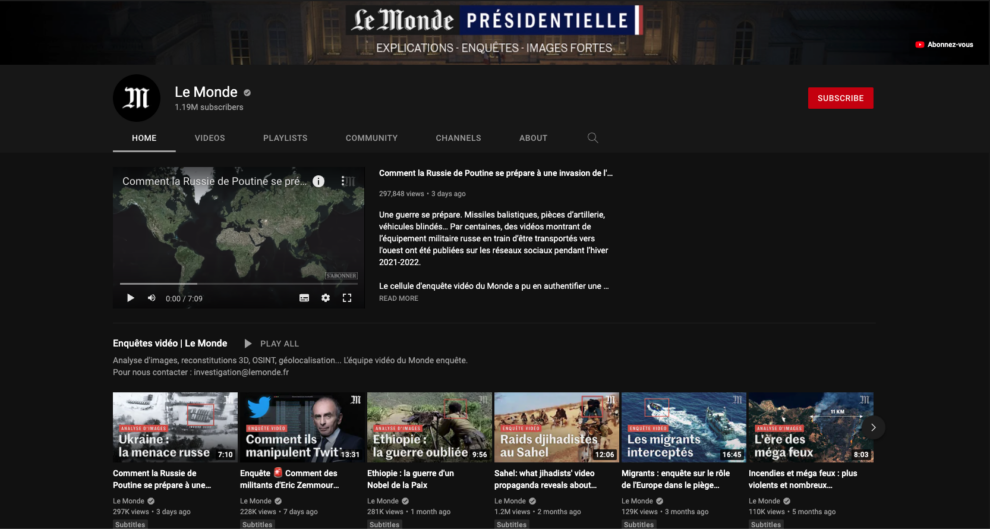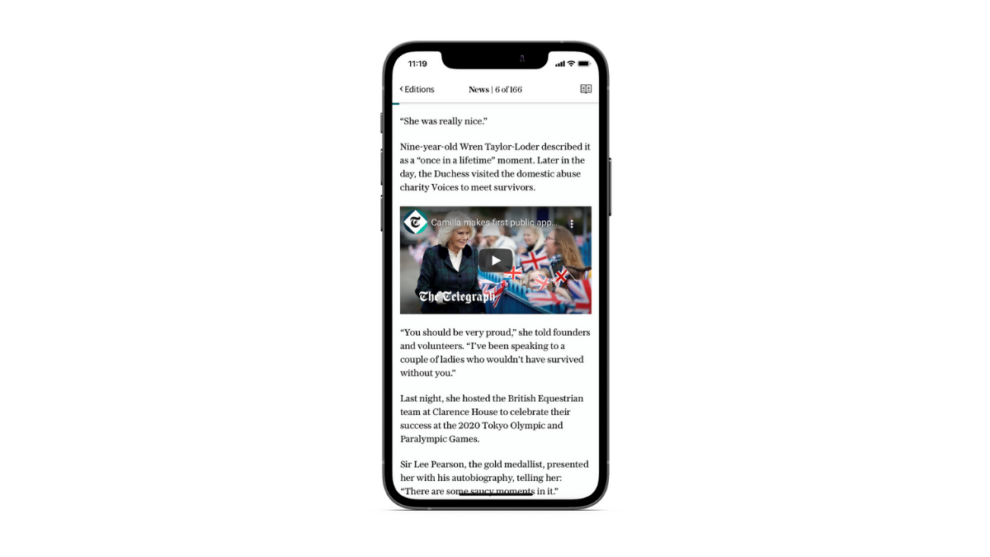Video: Struggle or Strike for News Publishers?
63% of publishers told Reuters that they plan to push more resources into their video strategies. But, in a world where publishers are focusing on subscriber revenue, do videos drive subscriptions? Do they create valuable revenue for publishers? Or are they just areas publishers believe they have to be involved with to feel relevant?
Video is a landscape that is forever changing. When I was growing up, Vine was the big thing, now it’s TikTok and honestly, I couldn’t tell you a huge difference.
Publishers failing to grasp the TikTok hype
Publishers see short form video as the holy grail since it is the home of the youth. With 1.4 billion active users per month, TikTok is one of the fastest evolving social media outlets. The 2021 Reuters Digital Report found that TikTok reaches 24% of under-35s across the world. Somewhat damning though is that just 7% use the platform for news.
Herewith in lies the problem: it is difficult to break into a world where people aren’t looking for news, especially as a traditional newspaper. That is why we have seen success elsewhere. In research undertaken by The Fix in July 2021, Spanish Digital Native Outlet ac2alityespanol was the number one European publisher on TikTok. The channel uses Gen Z and millennial presenters to provide the news in 1 minute in Spanish. This individual creator feeling is what TikTok is renowned for and explains their success. The outlet currently benefit from 182 million likes. But, they have been overtaken in terms of followers by a newspaper publisher.
The Daily Mail boast the most followers for a European Publisher with 3.5 million followers. This is a number now even greater than the Washington Post, once the shining light of publishers on TikTok. Content on The Daily Mail TikTok follows the pattern of most news accounts on the platform, trying to present an informal look at the news. This pushes followers to the MailOnline to read more, where of course the publisher makes money from digital ads. It does not however, push for loyalty or subscription commitment in their subscriber products.
The figures from the Daily Mail may seem positive, but this is somewhat of an anomaly. TikTok remains far more popular for influencers. Ultimately though, the focus of publishers is to create brand awareness leading to future conversion as followers grow older. But is the investment worth it in times of hardship?
What about Twitch?
Amazon-owned Twitch has become a significant player in the live-streaming world. Whilst news publishers have struggled to make their mark on Twitch, new media outlets have reached incredible milestones.
The (Jeff Bezos owned) Washington Post joined the streaming platform back in 2018 by creating programmes like “Playing Games with Politicians” and “Live with Libby Casey” in a bid to expand their reach. A quick look on their profile however quickly shows that the Post haven’t posted for 2 years.
But Ibai Llanos, a popular Twitch creator has had a different experience. Following the high profile move of Lionel Messi to Paris Saint German, Llanos received the honour of conducting Messi’s first live interview. This is a feat which would normally be sought after by newspapers from across the world. Llanos’ original broadcast was viewed live by 300,000 people across the world, a hugely significant feat.
Probably an even stronger example is Italian Football Journalist Fabrizio Romano. He has essentially taken over football transfer market reporting through his Twitch streams. Newspapers even quote him as a source. His show on Transfer Deadline Day had over 1.2 million viewers. Clearly his unique appeal provides huge competition to publishers, especially to those who pride themselves on their sports coverage.
Have publishers already found success on older platforms like YouTube?
YouTube has borne greater success for publishers. In 2019, The Economist reached 1 million Youtube subscribers, and this number has continued to grow with the publisher currently at 2.26 million. The publisher found that 86% of their readers watch videos online every week!
The Financial Times have also leveraged YouTube amongst their 645,000 subscribers, after finding that users who interact with video on their first or second visit have a higher likelihood to subscribe. Their videos are uploaded both on YouTube and their website, helping to bring people from outside to inside. The 2 financial publishers use YouTube to post to drive referral traffic back to their own website and ultimately increase publisher revenue.
In France, Le Monde have witnessed a growth in paid subscribers as they have seen their free audiences grow. Their YouTube channel is currently at 1.19 million subscribers and features explainer videos for many of the day’s articles. The French Publisher has over 400,000 digital subscribers and is the number one daily national newspaper in term of subscribers in France.

Clearly these figures are somewhat more promising for publishers. YouTube has been around for much longer than other outlets, and it is clear that publishers have a much stronger understanding of its power. Still, there are challenges. Publishers lack the power ensure viewers don’t move away to other videos on YouTube’s suggested videos algorithm. They also must focus on capitalising on YouTube audiences and monetising them. Finding a way to do this more effectively might be a great solution.
Publishers’ own video usage
At last week’s webinar on App Strategy, Mathieu Halkes from Schibsted explained that video was a tool Schibsted have used to enrich their app experience for subscribers. Integrated videos add value to articles and dive deeper into certain topics. They can find a home inside apps become a different form of entertainment outlet to boost subscriber engagement and retention.
The Telegraph have been successful in doing this for their new unified app. Inside their NextGen digital edition, the publisher add videos in line with the day’s articles. Embedded videos tend to come from external sources, therefore they show up in internet search. This can help to bring in new audiences.

The Independent have leveraged video in their strategy. Whilst The Independent’s video content is freely available across YouTube and Facebook, the publisher has focused on making their native experience more rewarding and enriching. The aim of The Independent’s video content is to present actual journalism and add value to their existing offering. In doing this, they aim to make their journalists popular personalities away from the paper. The familiarity that is developed with the journalists is designed to drive subscriptions.
To do this, journalists pitch their ideas to The Independent team and then commercial partners are sought out for further revenue generation. Video becomes more than just another social media post. What is particularly remarkable about The Independent’s investment in video is that their investment is genuinely revenue-generating video and furthers The Independent’s interests elsewhere.
Some final thoughts
Clearly it depends on the objectives of your video strategy. Social media and streaming platforms like Twitch are the home of young people, but do they want their news there and do they want it from publishers? The appeal of influencer personalities makes this difficult and the constant evolution of these platforms make the investment risky.
Newspapers are well positioned to leverage the power of long form video inside their own products to build and engage audiences rather than placing their focus on the constantly changing landscape of social video platforms.
Other Blog Posts

Stay on top of the game
Join our community of industry leaders. Get insights, best practices, case studies, and access to our events.
"(Required)" indicates required fields

